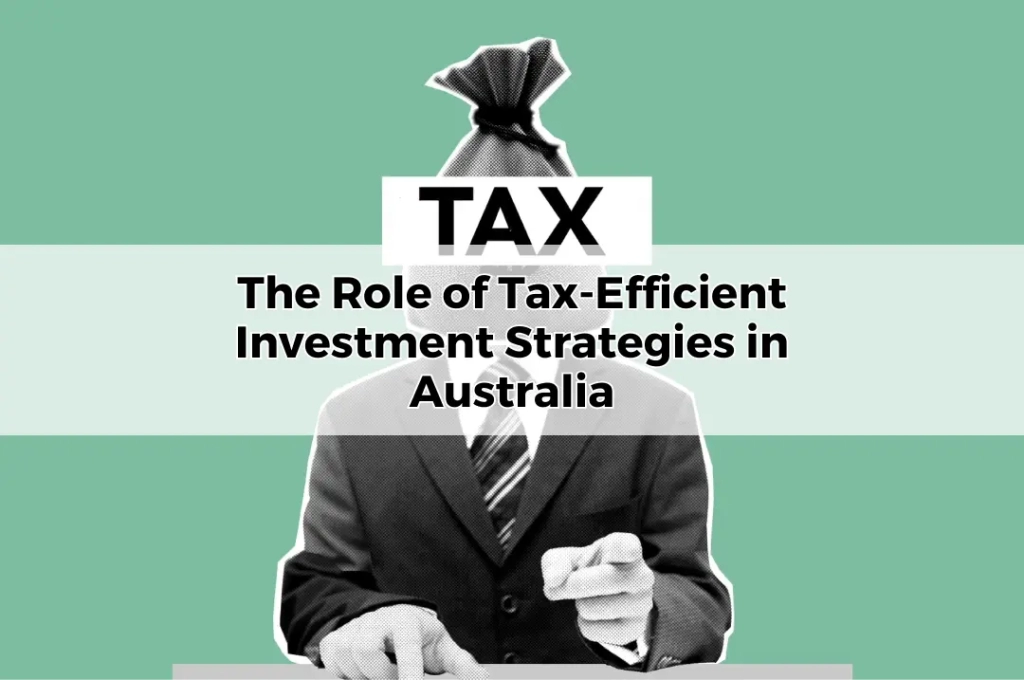The Role of Tax-Efficient Investment Strategies in Australia
Table of Contents
ToggleTaxes play a significant role in shaping investment outcomes. For Australian investors, implementing tax-efficient investment strategies can reduce the overall tax burden, enhance returns, and increase wealth over time. Tax-efficient investing isn’t just about finding profitable opportunities; it’s also about structuring and timing investments in ways that reduce tax liabilities. In this blog post, we explore the key strategies for tax-efficient investing in Australia, highlighting ways to maximise returns while staying compliant with tax regulations.
Tax-Efficiency in Investing
Tax-efficient investing aims to minimise taxes on investment gains, income, and distributions, allowing investors to retain more of their returns. In Australia, understanding how different investment types are taxed is essential for building a tax-efficient portfolio.
The Importance of Long-Term Investing for Capital Gains Tax (CGT)
Capital Gains Tax (CGT) is levied on profits when selling an asset for more than its purchase price. Holding investments for over 12 months in Australia qualifies for a 50% CGT discount on capital gains, making long-term investing a tax-efficient approach. Long-term assets include shares, managed funds, property, and other investments with growth potential.
Utilising Tax-Advantaged Accounts
Superannuation is one of the most tax-effective ways to save for retirement in Australia. Concessional (before-tax) contributions are taxed at a lower rate (15%) than most individuals’ marginal income tax rates, and investment earnings within superannuation funds are also taxed at 15%. Additionally, upon reaching retirement age, withdrawals may be tax-free, making superannuation a powerful tool for tax-efficient investing.
Dividend Imputation Credits on Australian Shares
Australian companies pay tax on their profits before issuing dividends to shareholders. To prevent double taxation, the Australian government offers dividend imputation credits (or franking credits) to shareholders who receive dividends from Australian companies. These credits can reduce shareholders’ tax liabilities, especially beneficial for retirees or low-income investors who may receive refunds if their marginal tax rate is below the company tax rate.
- Offsetting Capital Gains with Capital Losses
In Australia, capital losses can be used to offset capital gains, reducing the taxable amount. For example, if an investor incurs a loss on one asset, they can use this loss to offset gains on another, effectively lowering their tax burden. Carrying forward capital losses to offset future gains is another useful strategy for achieving long-term tax efficiency.
Investing in Tax-Deferred Products
Certain investment products, such as property trusts and infrastructure funds, offer tax-deferred income. Tax-deferred income allows investors to delay paying tax on the income portion until the asset is sold. For those in higher tax brackets, tax-deferred products can be particularly effective, as taxes may be payable at a lower rate in retirement.
Prioritising Growth Assets Over Income Assets
Investors can achieve greater tax efficiency by focusing on growth-oriented assets like shares or property, which tend to appreciate over time, rather than income-heavy assets that generate regular taxable income, like bonds or high-dividend stocks. Since capital gains are only taxed upon sale, growth-focused assets allow for deferring tax liabilities, which can be particularly advantageous for those seeking to maximise wealth over the long term.
Tax-Effective Asset Location
The strategy of asset location involves placing investments in accounts where they will be taxed most favourably. For instance, growth-oriented assets might be better held in superannuation accounts, where gains are taxed at a lower rate. Conversely, income-producing assets could be placed in lower-taxed personal or family accounts.
Consider Family Trusts for Asset Protection and Tax Minimisation
Family trusts are commonly used by Australians to hold investments and distribute income among family members. Income from investments held within a family trust can be distributed to beneficiaries in lower tax brackets, minimising the overall tax impact. Family trusts can also provide asset protection benefits, shielding assets from certain risks and liabilities.
Strategically Using Negative Gearing for Tax Deductions
Negative gearing allows property investors to deduct the difference between property expenses and rental income from their taxable income. This can create tax savings for those in higher income brackets, although negative gearing carries risks if property values don’t increase as anticipated. Nonetheless, when managed well, it can provide both tax advantages and long-term growth potential.
Taking Advantage of Investment Bonds
Investment bonds (or insurance bonds) are another tax-efficient option, especially for those looking to save outside of superannuation. These bonds are taxed within the fund at a 30% rate, which is lower than the top marginal tax rate. If the bond is held for ten years or more, earnings are tax-free upon withdrawal, making them attractive for long-term savings.
Structuring Withdrawals for Tax Efficiency in Retirement
For retirees, planning the timing and sequence of withdrawals is crucial for tax efficiency. Drawing down tax-free superannuation accounts first, while delaying other taxable investments, can optimise income and reduce tax obligations over time. A qualified financial adviser can help retirees structure withdrawals for maximum tax efficiency and sustainability.
Timing Investment Sales Around the Financial Year
Careful timing of investment sales, particularly around the end of the financial year, can impact tax liabilities. Investors may choose to realise gains in a low-income year to benefit from a lower tax bracket or delay sales until the next financial year to defer taxes. Proper timing, while complex, can be a beneficial part of a tax-efficient investment strategy.
Consulting with a Financial Adviser for Personalised Tax Strategies
Australia’s tax landscape is complex, with rules that can change frequently. A Toowoomba Financial Adviser or an Online Financial Adviser can provide tailored advice that considers your income, assets, goals, and tax bracket. They can help you build a diversified, tax-efficient portfolio and guide you in making adjustments as your situation or tax laws evolve.
Conclusion
Tax-efficient investment strategies play a central role in wealth creation for Australian investors. By implementing approaches such as long-term investing, maximising superannuation contributions, offsetting gains with losses, and choosing appropriate asset locations, investors can significantly reduce tax burdens and grow their wealth over time. Consulting a qualified financial adviser can further enhance these strategies, ensuring that your approach aligns with personal goals and the ever-evolving tax regulations in Australia.









